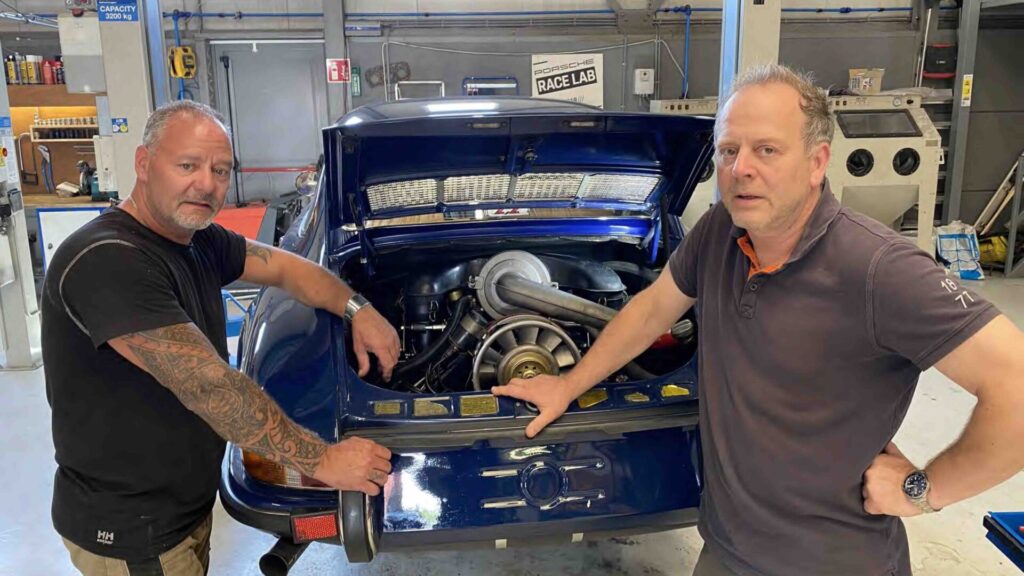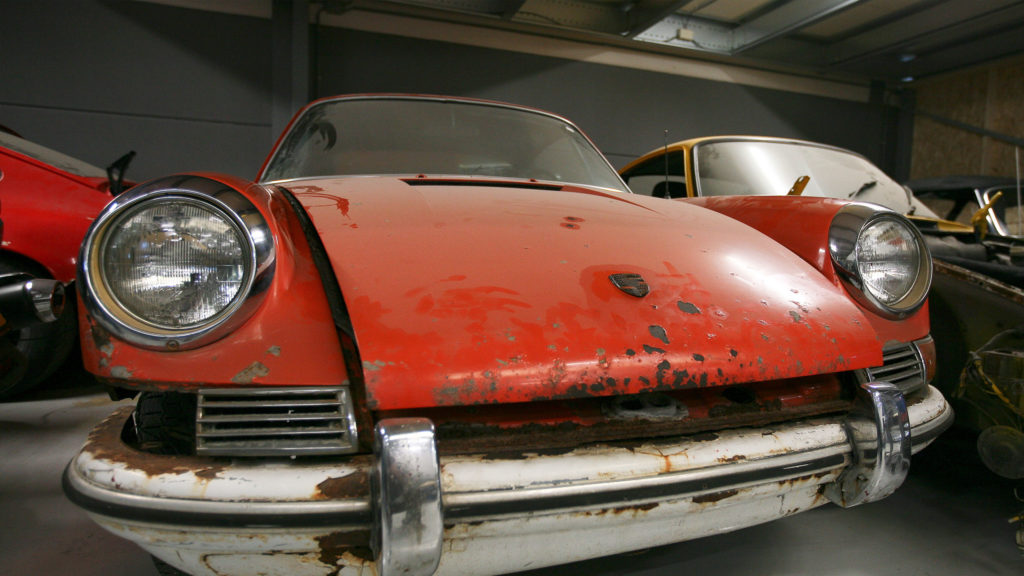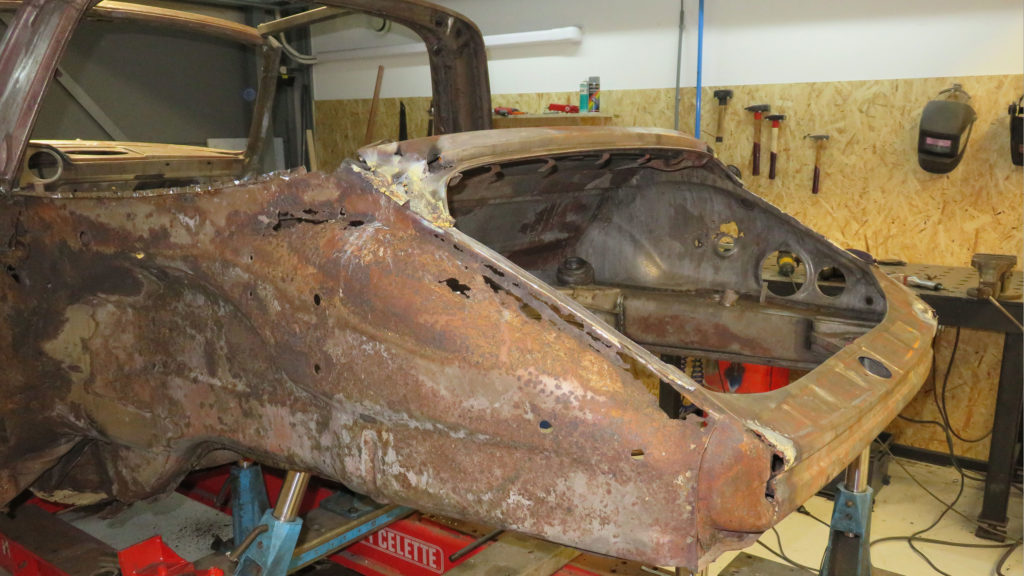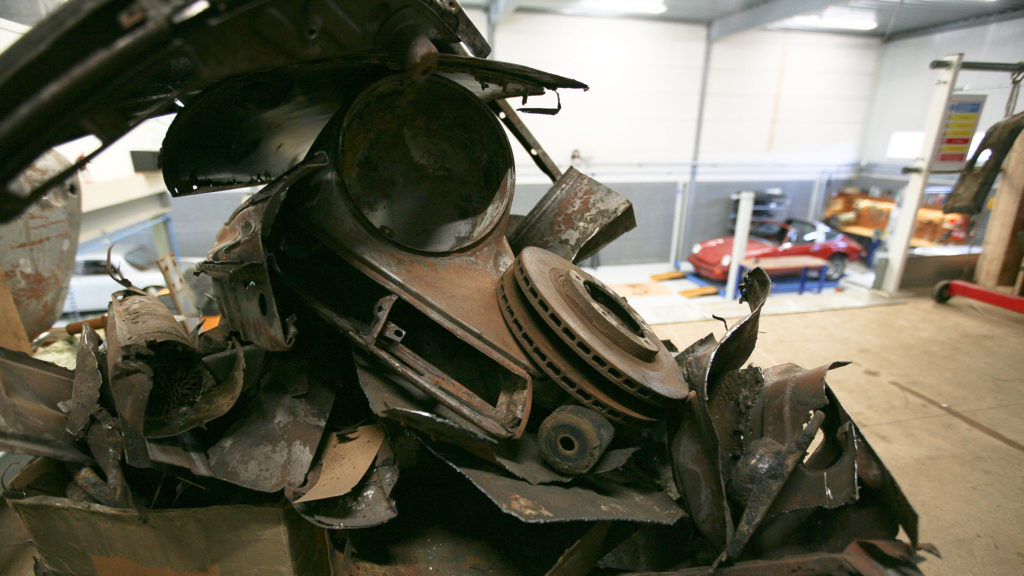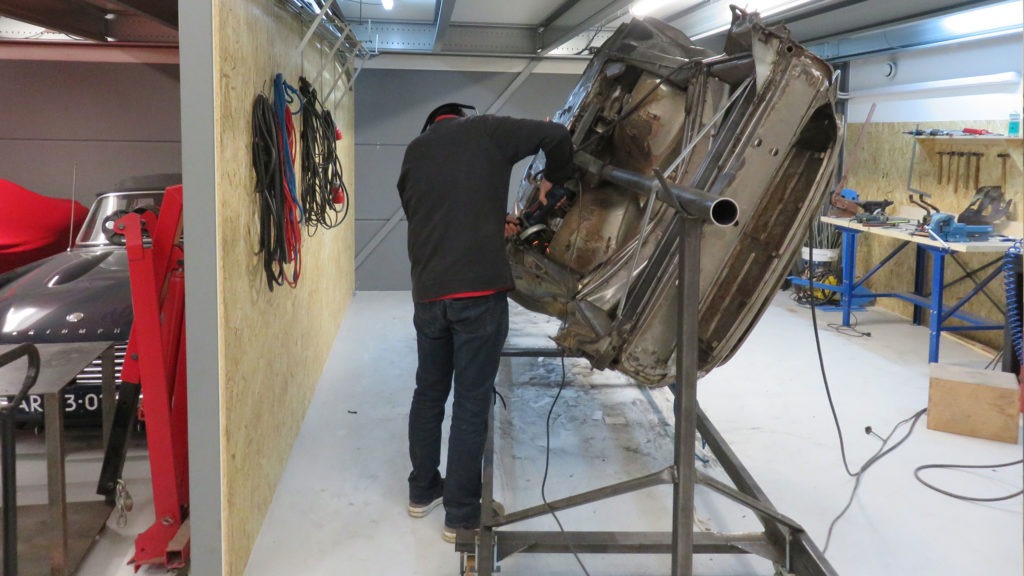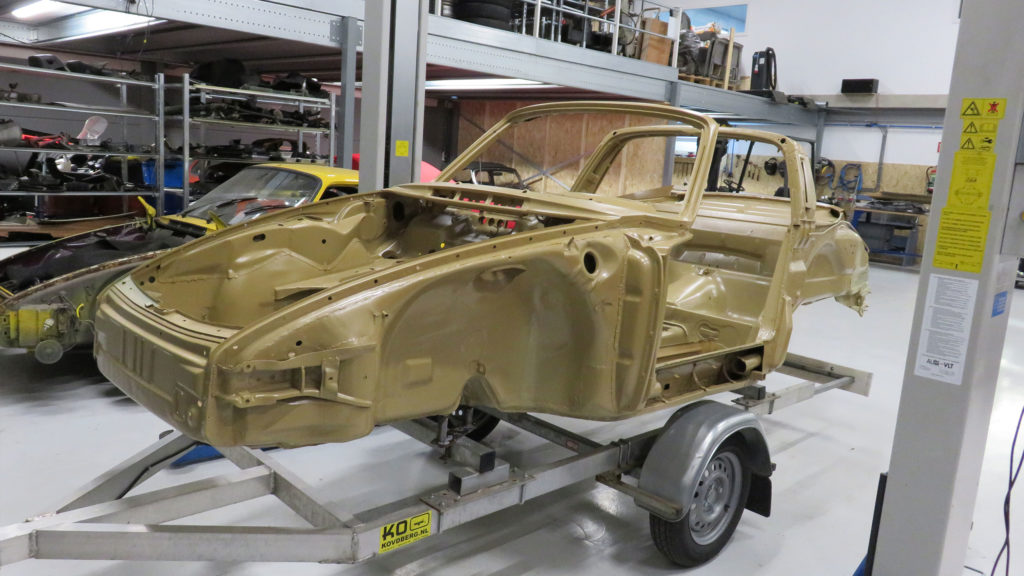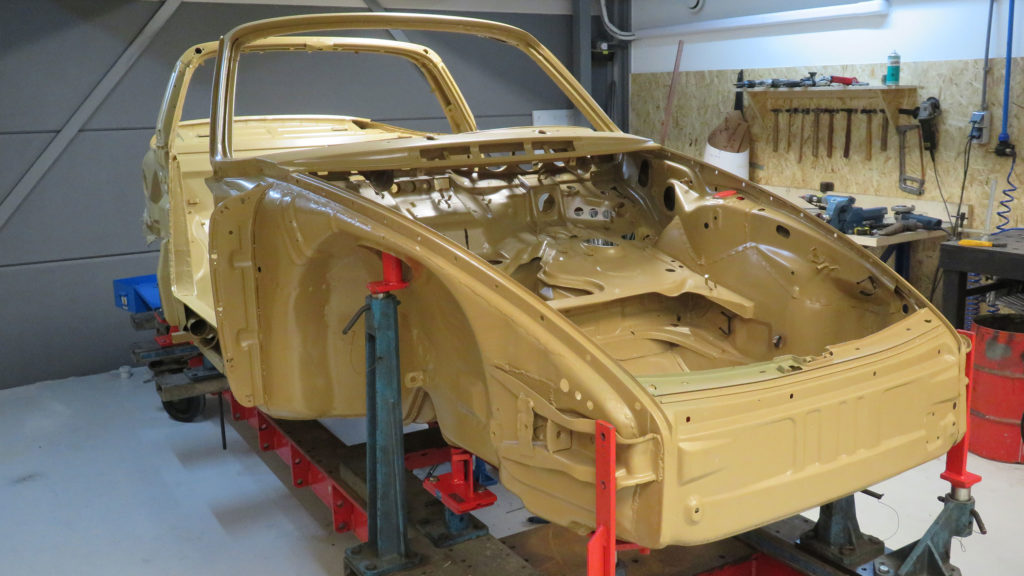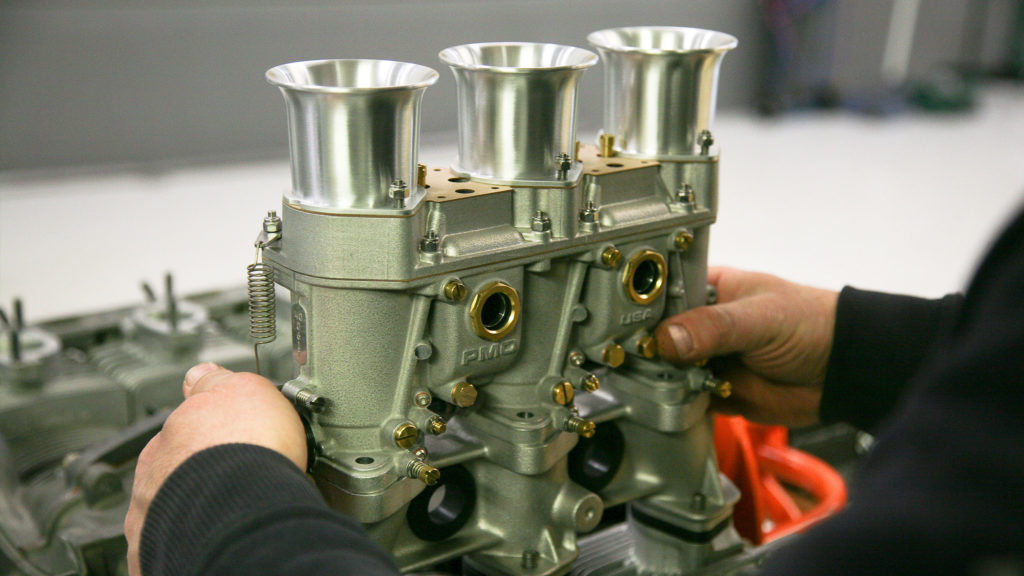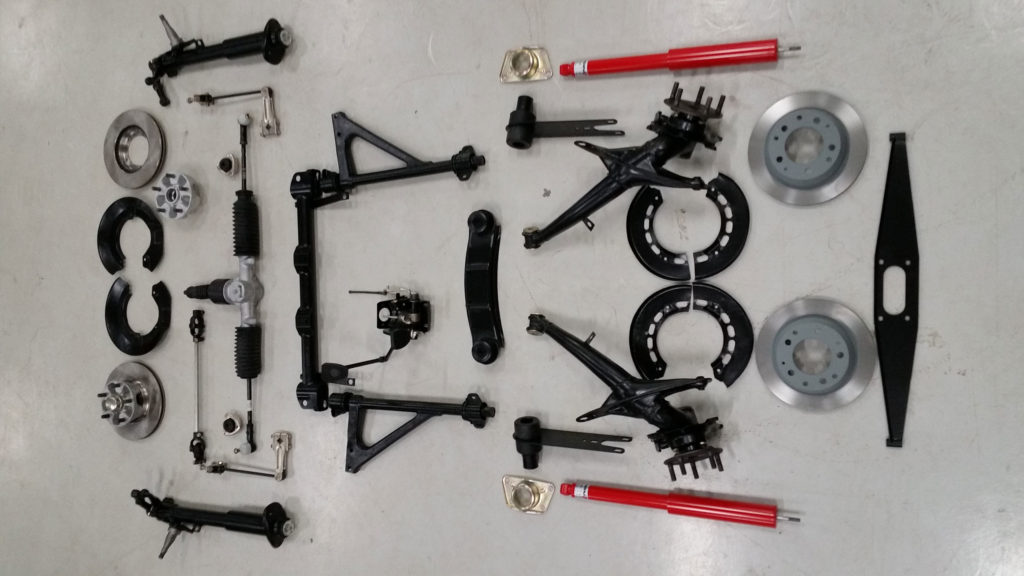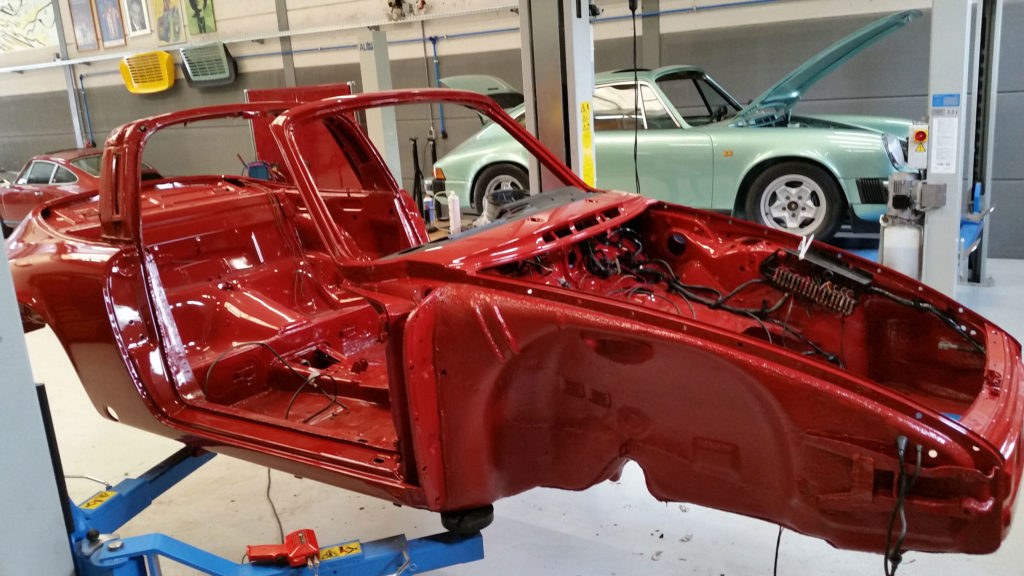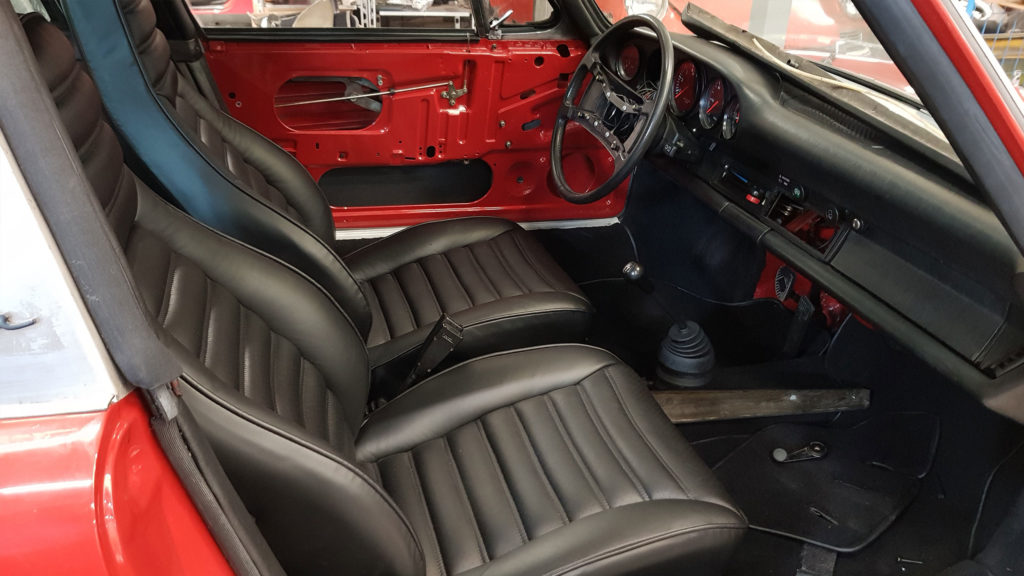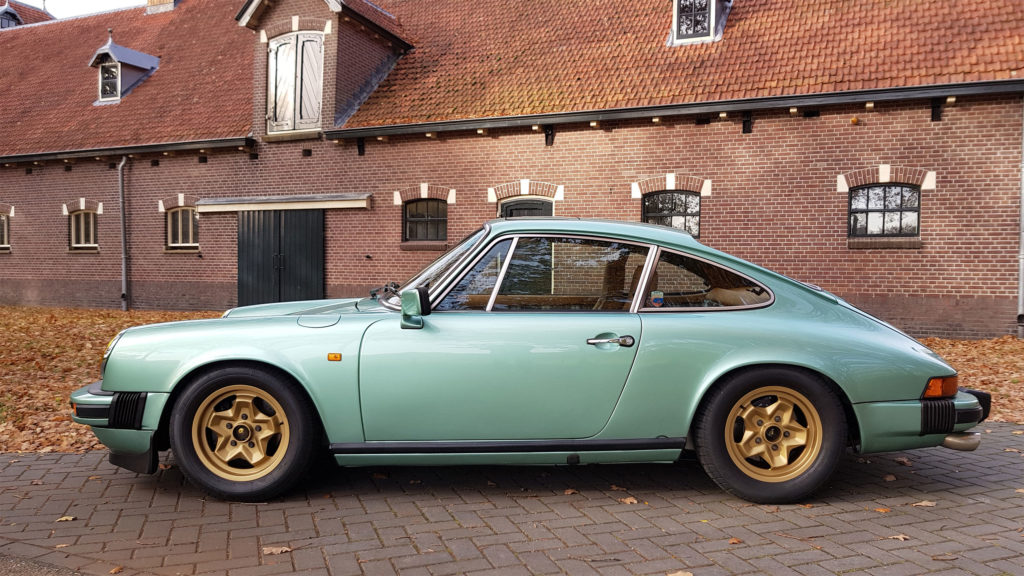Approach of restoration process
If it ain’t broke, don’t fix it.
Every car that comes to us is different. A long life affects every car differently. Cars from sunny states in the US tend to have withered interiors but no rust. They have often been subjected to bad paint-jobs and haven’t necessarily been well-maintained mechanically. Cars from Italy also have little rust, but they have usually been tended to with love and care. As a result, we thoroughly review every car coming in and determine what’s to be done. Our main principle in this process is “If it ain’t broke, don’t fix it.” The cars we work on sometimes come from customers. More often though we buy the cars ourselves, to sell them after restoration.
It’s OK to realize it’s a used car after restoration.
We make an effort to not ‘over-restore’. For example, we do not like thick new leather that looks like it came from a sofa. We do use parts that look used. As far as we’re concerned, it’s OK to realize it’s a used car after restoration. Parts marked by weather, like window posts, door handles, etc. belong to an old car. They are part of its character. We aim for an authentic look as much as possible; not everything has to be new. If something is 50 years old, it’s OK to see it looking that way.
We actually never work on a car that we wouldn’t want to own ourselves.
We can undertake modifications that improve performance, but usually we limit ourselves to things that can be reversed. Our approach is to bring the car back to its original state without infringing on the car, such as installing improved brakes.
We pretty much do everything ourselves, except when it comes to paint and glue. We outsource our cars to a specialized paintshop and interior specialist. And we actually never work on a car that we wouldn’t want to own ourselves. That also applies to the colour of the car.
In our view, the preconditions for successfully restoring cars are the following:
Buying good cars: that sounds easier than it is. A car with a large patch of rust is no problem – not even when a substantive piece of bodywork must be replaced. Restoring is often much more difficult when everything is a bit rusty. That said, it may be worthwhile replacing up to 60% of the bodywork for a car that’s sufficiently special. Deterioration resulting from ageing is often relatively easy to repair; bad restoration jobs are often much more difficult to turn around.
- The completeness of the car is also important; missing parts are usually the parts that are no longer available.
- Good planning: making sure things fit well together and, in particular, order parts on time so that you can later do the revision in one go. Otherwise, you’ll constantly be waiting for parts to arrive.
- Precise and careful work: that’s of course obvious.
- It is often necessary to find creative solutions to repair items or replace parts that are no longer available.
- A lot of online searching for parts and repair procedures.
- Selecting interior/upholstery to match the model/year.
The process of restoring a car
- The team: Rick Nouwens (l) en Philipp Wolff
- This is how the car arrives, including holes and ready to be taken apart.
- Before we start welding, the entire bodywork has been stripped in a chemical bath.
- We use a Celette jig to retain the sizing if large chunks of body must be replaced.
- All this comes from a car before we start putting it back together.
- To facilitate welding the bottom of the car we turn it around on a ‘rotissery.’
- The body is dipped in a KTL bath once we’re done with that.
- Once we get the car back with new protection against rust, we fit everything together and fix small dents before sending the car to the painter.
- While the car is at the spray painter, we continue with the other parts.
- Some new parts are powder coated or galvanized.
- Bare bodywork returning from the paint shop.
- After the bodywork has been put together again, we can fix the interior into it.
- And eventually the car is done!
